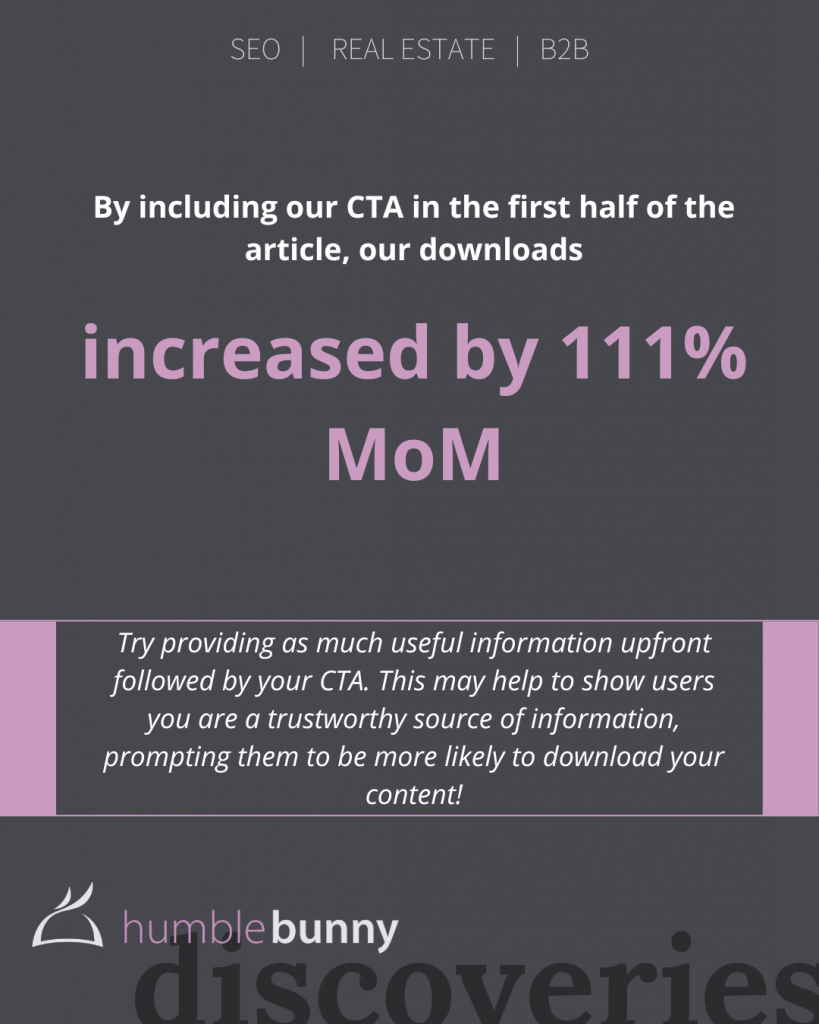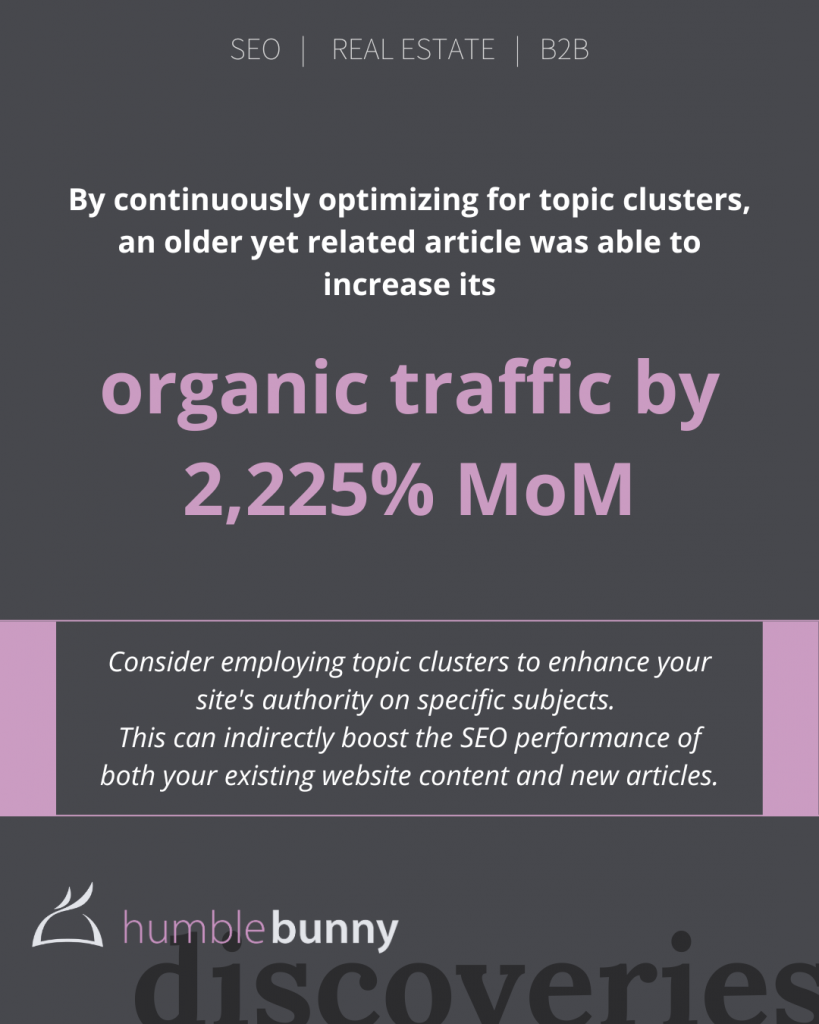Last Updated: March 29, 2024
Different countries have unique cultural, linguistic, and contextual factors that influence online search behaviour. Adapting your content to align with local search intent ensures relevance and resonates with users in specific geographic locations.
However, many brands fail to localize their approach when entering the Japanese market—leading to weak SERP performance and ineffective keyword targeting strategies. Below is our list of top 10 mistakes to avoid when engaging in SEO marketing in Japan!
Key Facts Influencing Japanese SEO
- Out of approximately 125 million people, 93% of people are internet users
- 97.9% of the local population are ethnic Japanese – preferring to read and speak in the Japanese
- language, which is highly context-based and has three separate writing systems
- The online preferences of Japanese people are known to differ substantially from those of Western
- internet users, as well as those in other Asian nations
- Japan’s smartphone penetration rate is forecasted to reach almost 93 percent by 2026, with many citizens making online searches on their mobiles rather than desktop computers (especially while traveling to and from work each day on the nation’s public transport system)
- Over 92% of searches take place on Google or Yahoo! Japan — both using very similar algorithms when it comes to ranking online content
Search Engine Market Share in Japan (2022)
| 76.39% | |
| Yahoo! | 16.22% |
| bing | 6.73% |
| Baidu | 0.3% |
| DuckDuckGo | 0.17% |
| YANDEX RU | 0.06% |
Source: Statcounter
1. Not Catering to Your Japanese Audience

SEO is the most effective when you’re catering to the needs of very specific audiences. Knowing what people are looking for when searching online and the kind of content they enjoy most allows you to target the right keywords that will drive traffic and build great content that ranks well.
All this starts with a good understanding of your Japanese audience and how they differ from the usual groups you’ve targeted in the past. A few things worth keeping in mind when marketing in Japan are:
- Western doesn’t always mean better. You may think that your brand and products have an edge because they’re foreign and “exotic” but Japanese consumers often look for things that are familiar and reliable.
- Showcasing that you’re too different or unique may not work as well here as it does in other countries.
In many cases, more information is better than less. Website homepages, landing pages, blog posts, and product pages that feature too few details and descriptions are sometimes seen as suspicious.. - Japan has a rapidly aging population and older groups can have very different preferences to younger generations, especially when it comes to online experiences. Learning what each group needs and adapting your website and SEO content is necessary if you want your content to perform well here.
To learn more about Japanese consumers, check out our guide: Marketing in Japan? 10 Important things You Need to Know About Japanese Consumers
2. Not Creating Brand New Japanese SEO Content
If possible, we’d recommend that you build your Japanese SEO content from scratch with the help of local creatives and marketers. The process of translation and localization (even when done with great care) is usually less powerful than creating brand new content that 100% meets the interests and needs of Japanese people.
SEO success relies so much on the way people behave online, what their mindset is when searching online, and their cultural preferences. If you’re always trying to adapt or tweak your content (written for English-speaking audiences), you could be missing out on many opportunities to really connect with your audience through relevant content.
A translated SEO blog post, even though it has performed well in your home market, has no guarantee of doing well in Japan. It’s much better to invest time and energy into creating something new.
To learn more about the Japanese localization process, take a look at our blog: Japanese Website Localization – Do I Need to Reinvent My Brand?
3. Not Targeting the Right Japanese Keywords
Finding the right keywords requires a combination of creativity and strategy. And simply translating your list of English keywords into Japanese won’t get you very far. It typically takes us several rounds of brainstorming and research (with a clear idea of our target audience in mind) when building a powerful keyword list for our clients in Japan.
For one thing, the Japanese language has many terms that simply aren’t translatable into English. There are also many English “loanwords” and adaptations of English terms that are incredibly popular in Japan, but won’t come to mind for a non-native Japanese speaker looking for suitable keyword variations.
On top of this, there are specific terms that only certain demographics will use. If you’re trying to get traffic from younger consumers but are using a traditional Japanese word that only older searchers are likely to type into Yahoo! Or Google, obviously this isn’t great!
Ultimately, you must respect that the Japanese lexicon is complex and understand that the keywords people use during searches are going to be heavily influenced by their culture.
Learn About Our Recommended Japanese Keyword Research Process
4. Ignoring Japanese Search Intent

The search intent of the same keyword in Japanese and English (even if they seem to translate easily) can differ massively. This means that you must check the intent of every single potential SEO keyword you plan to target before confirming its place in your strategy.
We’ve found that even the most simple transactional terms, translated from English to Japanese, yield search results that are completely irrelevant to our client’s businesses in the past.
If you want to target search terms and phrases that are likely to drive the right kind of traffic to your pages, make sure that you’ve audited the specific intent of these searches by checking the current search results that appear on Google or Yahoo!
5. An “Unhealthy” Backlink Acquisition Strategy
Producing excellent Japanese content with rich data and engaging visuals is our recommended approach for acquiring backlinks.
This can then be followed up with a sound digital PR campaign and outreach process, where you promote your content to targeted Japanese websites in the hope of them referencing your content and giving you a backlink.
What we don’t suggest is trying to purchase all your backlinks in Japan. We’re sympathetic to brands who feel the frustration of not being able to achieve backlinks easily, but caution those considering paying for links from both local and international backlink service providers. This tends to result in too many links from low-authority spammy websites, unrelated to your industry — something Google will penalize you for.
Healthy Tips for Generating Backlinks
- Create an original report with unique data and insights that offer real value to people and businesses
- Launch an event or activation that can be promoted by industry news publishers
- Develop an online resource or digital/interactive tool that has a wide-reaching application
- Offer to write guest articles for targeted publishers, showcasing your industry knowledge and thought leadership
- Offer exclusive interviews about your brand and products — given by your CEO, founders, or company leaders
Want Some Quick and Effective SEO Tips?
6. Not Adapting Your Web UX for Japanese Users
It’s worth spending some time considering whether you need to adapt your website’s overall UX for Japanese users to support your SEO marketing in Japan. Web design preferences can differ substantially here, compared to the markets you’re used to targeting.
For example, while certain global web design trends are popular with younger demographics, some older Japanese users will be put off by designs that are too minimal, sparse, or interactive in a way they’re not used to. Equally, certain colors and visuals may be more effective for your local audience than the ones you are currently using.
Learn More About Web Design Trends in Japan
Ensure Good Mobile UX
Google prioritizes mobile-friendly websites and a huge amount of Japanese citizens search for products on their mobiles. In fact, the mobile ecommerce market is expected to grow by 16.9% to reach $16,391.9 million in 2022, according to Global Newswire.
7. Not Working with Japanese Copywriters and Marketing Creatives

There are many activities that can be handled by English-speaking marketers, creatives, and project managers, however, when it comes to building keyword lists and writing content for Japanese audiences, this should really be done by native Japanese speakers.
When trying to produce content that genuinely corresponds to the questions and needs of your target audience when engaged in SEO marketing in Japan, you need the right Japanese support on board to help you do this, rather than first creating content in English and then translating it, which is a slower and less effective way to get the job done.
8. Not Adjusting Your Meta Data and Technical SEO for Japanese Keywords
Your URLs, title tags, meta descriptions, and all technical SEO components should be fully localized. Search engines are incredibly sophisticated in understanding the meaning of online content and you need to do everything you can to inform them that your content is fit for purpose.
Tips for Writing Powerful Metadata
Prioritize focus keyword placement – The exact keyword used by a searcher will be highlighted by Google in a search and increase the chance of someone clicking through to your website. Synonyms and similar phrases are recommended too, as long as you’re not “stuffing” too much into a small space.
Keep it concise – When writing meta descriptions in Japanese, they may take up more room than a standard description written in English. Take care to produce meta descriptions that are within the recommended word/character count.
Match metadata to content – Relevance is incredibly important for SEO marketing in Japan – even at the metadata level. Metadata should talk about the content on your page and nothing else.
Don’t leave metadata as an afterthought – Metadata functions as an introduction to your page for potential browsers and customers. As well as being descriptive, you should think about what’s going to compel people to actually click on your search result and not an alternative link on the first page of Google or Yahoo! Japan.
9. Not Supporting Your SEO Gains with Other Strategies
Content marketing and SEO go hand in hand, but there’s also plenty of crossover between SEO, PR, PPC, Email marketing, and Social than some brands realize.
Planning your projects more holistically and allowing teams (even if they’re external agencies) to collaborate and share resources can elevate your performance and make goals more achievable.
You can save a huge deal of time too, in terms of consolidating your content development and gathering processes so that content can be repurposed for different strategies. Japanese users, like those in other markets, also look for consistency between the different channels of a single brand.
HB Pro Tip: Always promote your published SEO content on social media channels too – driving more traffic to your content and increasing the chance of reshares. This also provides strong social proof for anyone trying to learn more about your brand before they commit to a purchase. Having a decent following and engagement from your followers on places like Facebook, Twitter and Instagram can fill prospects with greater confidence about your brand.
10. Not Tracking Content and Keyword Performance Diligently
![]()
You’re probably tracking top-level SEO performance already, but are you measuring the performance of individual pieces of content and the progress of your target keywords over time?
Keeping a close eye on the small things will ultimately help you to achieve the kind of insights that will help your future SEO content perform better. For instance, if you are seeing good traction with specific keyword groups or topic clusters, investing more in these areas can help drive greater traffic to your site sooner, than simply working through a pre-set list of keywords with no logical/strategic order.
While we wouldn’t recommend changing anything significantly if you’re not seeing results immediately (as SEO takes time to show its true benefits) you can still make small adjustments to your approach to make sure you’re integrating new learnings into your approach. Things to look for are:
- Engagement levels on individual pages and pieces of content
- Click-through rates to other pieces of content, lead forms or ecommerce product pages
- Where exactly new users are “dropping off” before making a purchase or completing a lead form
- The most popular terms used to find your brand online
- High-performing keywords and topics (including those not currently included in your target list of SEO keywords)The search traffic gained from individual Japanese keywords over time
Expert Insights: Navigating SEO Marketing in Japan
Here are Nate Hoernig’s (Founder & CEO of Humble Bunny) recent learnings and predictions for the future:
-
We learned that video, as an advanced interaction and user experience piece, did not have as immediate a result on boosting page performance in SEO as we expected. This was utilizing a new account, on a site that was not increasing meaningfully in traffic for well-developed clusters. This suggests that for videos to be effective in SEO, it might require established accounts with independent authority (think YouTube channels). We recommend further testing with a consistent video strategy to explore this possibility
- My prediction going forward is that SEO tactics for brands that are advanced in their SEO will decrease in value over time. In other words, brands need to re-evaluate their positioning, value proposition, and overall authority – which goes beyond backlinks and will increasingly include social mentions. Owned (not borrowed) content and strong value propositions are what will win and be the keys to success in the end.
Connect with Nate on LinkedIn for more tips and real-time learnings about all things marketing in Japan!
Final SEO Marketing Tips
Finally, below are some SEO practices we think you SHOULD be following:
-
- Develop Japanese FAQ pages – these are incredibly effective at quenching the local thirst for knowledge and will show readers that you understand what their concerns and motivations are. The opportunity to integrate important keywords shouldn’t be missed either!
- Use a cluster keyword strategy – organizing your keywords into topic clusters and then creating pieces of content that function as “pillars” is an effective way to consolidate your SEO gains.
- Invest in high-quality visuals – adapting your photographs and illustrations/graphics for local audiences is an effective way to improve the performance of your SEO content and improve your rankings.
SEO Marketing in Japan FAQs
How to do SEO in Japan?
Ultimately, a comprehensive strategy that combines cultural understanding, localized content creation, and technical optimization is key to achieving SEO success in Japan.
To excel in SEO in Japan, it’s essential to conduct thorough keyword research in Japanese, considering not only direct translations but also culturally relevant terms and phrases. Crafting high-quality, localized content that resonates with the target audience is also paramount, to provide value and address specific search intents.
Additioanlly, optimizing technical aspects such as meta tags, URLs, and site structure for Japanese search engines is crucial for visibility, and building a strong backlink profile through partnerships with reputable Japanese websites and leveraging social media platforms popular in Japan can also enhance SEO efforts.
What search engines are used the most in Japan?
In Japan, as of February 2024, Google dominates the search engine market with a significant market share of 77.9%. Following Google, Yahoo! holds a notable share of 12.86%, making it the second most used search engine in the country. Other search engines like bing, Baidu, DuckDuckGo, and YANDEX RU collectively hold smaller shares of the market, with percentages ranging from 0.32% to 7.96%. While Google remains the primary choice for most users in Japan, Yahoo! also commands a substantial user base, indicating diversity in search engine preferences among Japanese internet users.
What are common SEO marketing mistakes to avoid in Japan?
Make sure to avoid these 7 common SEO marketing mistakes:
1. Neglecting to tailor content to the Japanese audience, leading to lack of relevance and engagement.
2. Relying solely on translations instead of creating original Japanese content.
3. Failing to conduct thorough keyword research to identify relevant Japanese keywords.
4. Overlooking Japanese search intent, resulting in misalignment of content with user needs.
5. Acquiring low-quality backlinks from irrelevant or spammy sources.
6. Neglecting to optimize metadata and technical aspects for Japanese keywords.
7. Not continuously monitoring and analyzing SEO performance for improvement.
What are the best tips for doing SEO marketing in Japan?
By embracing following tips and refining your approach over time, you can navigate the complexities of Japanese SEO and establish a strong online presence in the Japanese market.
1. Understand Google’s Criteria: Google evaluates websites based on content quality, relevance to search queries, and user experience. Align your SEO efforts with these criteria to improve visibility.
2. Create Audience-Centric Content: Craft high-quality content tailored to Japanese audiences, addressing their interests and needs. Identify and improve thin content to enhance your site’s overall quality.
3. Match Content with Search Intent: Adapt your content to align with Japanese search intent, considering cultural nuances and audience preferences.
4. Target Relevant Japanese Keywords: Conduct thorough keyword research to identify relevant Japanese keywords, avoiding direct translation from English.
5. Cater to Local Aesthetic Preferences: Design your website with Japanese aesthetic preferences in mind, featuring visually appealing and informative content.
6. Optimize On-Page Elements: Pay attention to on-page elements such as title tags, URLs, image alt text, and internal links, ensuring they are optimized for Japanese SEO.
7. Enhance Off-Page SEO: Implement off-page strategies like press releases, guest blogging, and social media promotion to boost your site’s authority and backlink profile.
8. Improve User Experience: Prioritize mobile-friendliness and site speed to enhance the overall user experience, catering to the growing number of Japanese smartphone users.
9. Invest in Long-Term Strategies: Develop a comprehensive SEO strategy that integrates long-term initiatives, such as regular content creation, keyword research, and cross-channel optimization.
Need help marketing your business in Japan? Let’s chat on how we can help.
Steal Our Best Ideas
Actionable insights straight from our data
Here are a couple of quick discoveries we’ve pulled from the data of our latest projects. Why? To help you make the changes you need to gain traction in the Japanese market! As an agency, we are always digging deeper and searching for those little yet significant tweaks that will push our clients to the next level of success. If you need a partner to help you identify and implement changes like these on a monthly basis, let us know!




About the Authors & Voices in this Article
Jim KerseyLead Writer |
 |
Paolo RagoneEditor, Contributor |
 |